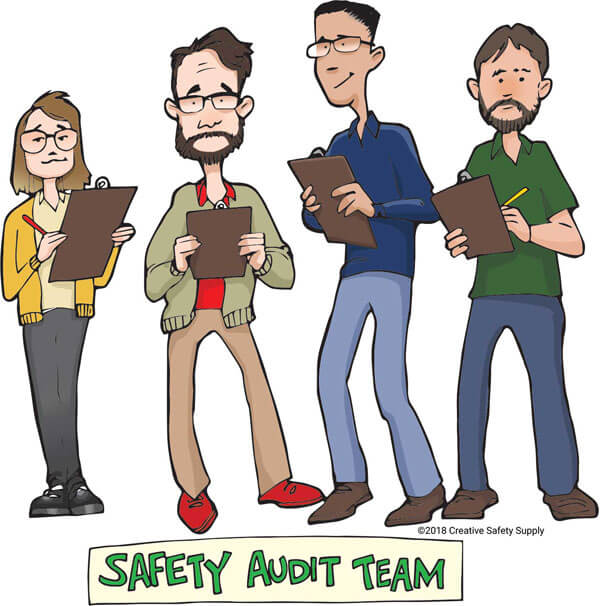
A safety audit is a general term used to describe an activity where a facility gathers information about one or more aspects of the workplace in order to evaluate the risk levels for health or safety issues. During this audit one or more people will gather data related to the efficiency, reliability, and effectiveness of their health and safety systems.
When done properly, a safety audit will help determine if a company's day to day activities are in conformity with their safety efforts. This means a safety audit is typically only done after a safety plan for the facility is already in place. A safety audit can, however, be used as part of the process in the creation of a full workplace safety plan for a facility.
Why Are Safety Audits Done?
Safety audits and safety inspections are performed for a variety of reasons. Each company will have their own specific list of reasons for completing a safety audit. The following are just a few of the most common reasons:
- Legislative Requirements - There are many local, state, and federal laws in place that require facilities meet certain safety standards. A safety audit can help ensure those standards are met.
- Safety Concern - Keeping employees and the workplace safe is ethically very important.
- Injuries - If someone has been injured in a specific area of the workplace, it is often necessary to perform a safety audit of that area to determine whether the injury was a one-time occurrence or there is a risk of it happening to someone else.
- Bottom Line - While safety improvement in the workplace is often looked at as an expenditure, in the long run it can positively improve a company's bottom line.
- Safety Culture - Employers that want to promote a safety-focused culture need to set the tone by engaging in safety-related activities such as a safety audit.
Performing a Safety Audit

When planning a safety audit, it is important to follow a set process. Start by forming a safety audit team or teams. Some companies choose to hire outside consultants to perform the audit, which can be very effective. If using existing employees, make teams that include 3-5 people and always ensure employees do not inspect their own work environment.
Those on the safety audit teams should be trained on the current safety standards so they know what to look for. In addition, knowledge of laws, OSHA regulations, and any other standards that may apply can help them identify potential safety concerns.
When ready, the safety audit teams need to look at any incident reports for the area they are auditing. These reports can give key insight into where potential problem areas exist. They can then go to the physical location of the area being audited and watch work being done. They can ask questions of the employees in that work in the area and get as much information as possible.
Finally, teams should take all the information and analyze it for potential safety concerns. Some safety issues will be quite obvious, but others may be hidden in the data. Once the audit is completed, either the same audit team or another team should begin making plans for what can be changed in the facility to improve safety based on the information that was gathered during the audit.
Resources
- https://www.osha.gov
- https://www.indeed.com/career-advice/career-development/safety-audit

